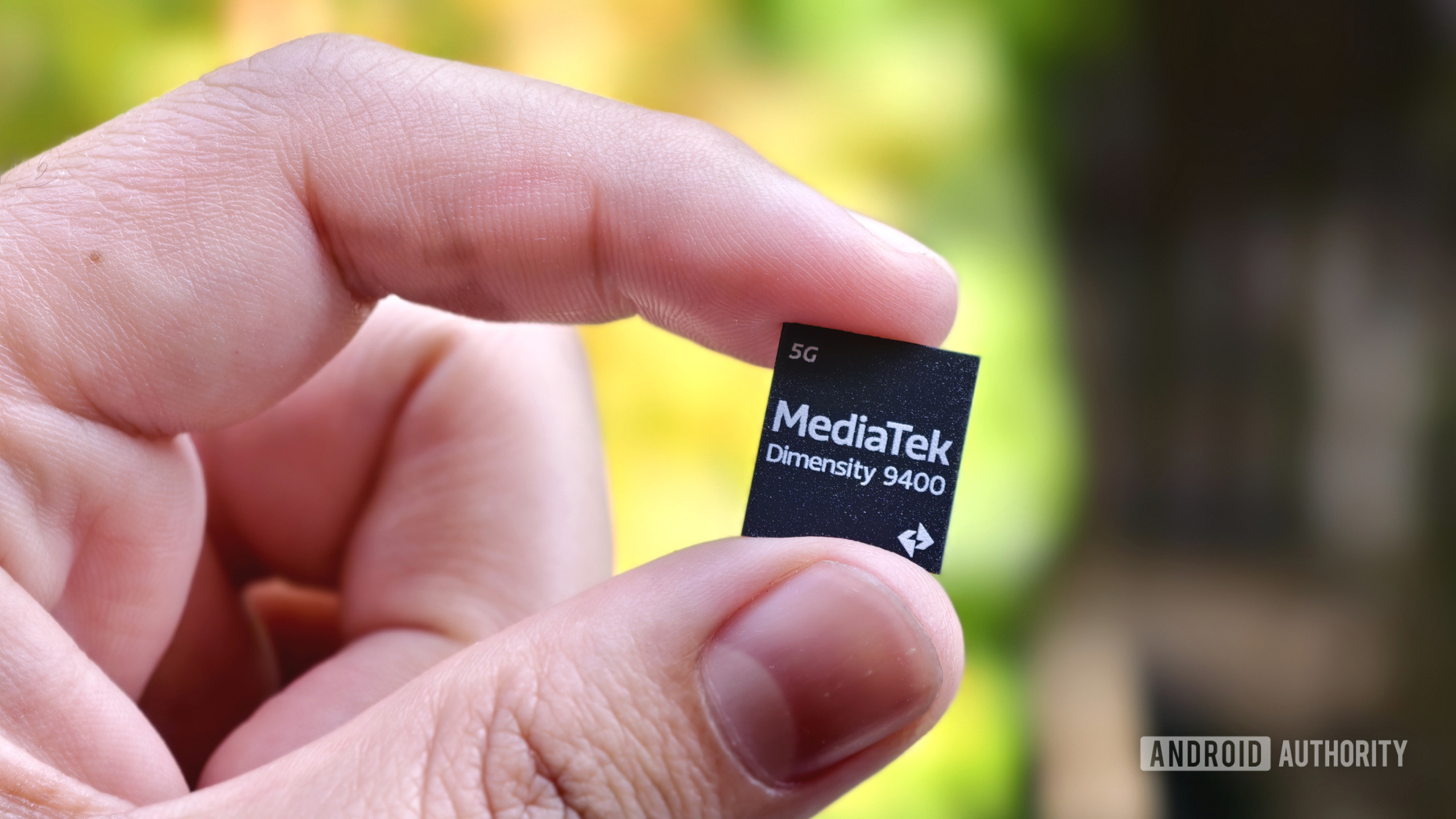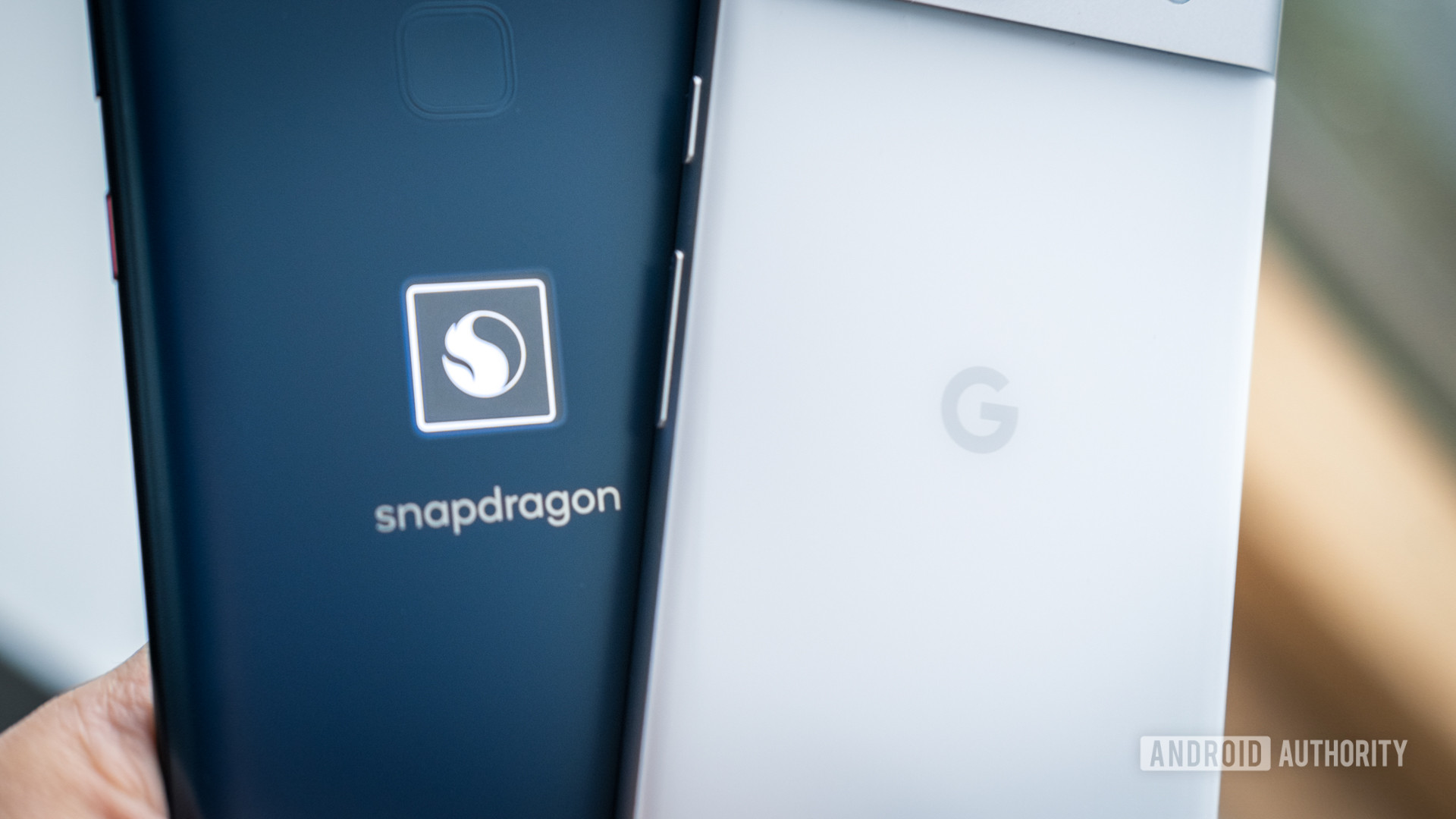Affiliate links on Android Authority may earn us a commission. Learn more.
Has Qualcomm finally secured its vice-like grip on Android flagships?
Published onOctober 26, 2024
If early benchmarks are to be believed, Qualcomm’s new Snapdragon 8 Elite is a serious workhorse that easily outpaces current Android and even Apple smartphones. Obviously, this will cause other silicon developers to be concerned. It’s rumored that Samsung is rushing to secure more chips for Galaxy S25, for instance, possibly because it wants to guarantee the absolute best performance for all its next-generation flagships.
While we’re still waiting to see if the 8 Elite performs as well as promised in upcoming consumer handsets, even a few percentage points dropped will still leave next-gen Snapdragon-powered phones well ahead of most competitors. This could cause quite an industry shakeup.
Room for more than one big chip player?

For a number of years now, the Android chipset market has mostly been a case of Snapdragon and “the rest.” It’s not that rival players like MediaTek and Samsung have produced massively inferior chips; performance and feature comparisons have often been relatively close, and Qualcomm hasn’t always been first with new industry features. However, partnerships and sales volume, and to some degree public perception as well, have leaned heavily in Qualcomm’s favor for most of the past decade. It’s hard to name many recent flagship smartphones that are not powered by Snapdragon.
Reports that Samsung is once again looking for enough chips to power its Galaxy S series exclusively with the Snapdragon 8 Elite highlight two key issues. First, Samsung Foundry’s manufacturing yields are once again rumored to be in trouble, resulting in far too few suitable chips from its cutting-edge manufacturing process. We first saw signs of issues with the Snapdragon 8 Gen 1, which was manufactured on Samsung Foundry’s 4nm node. The chip suffered from high temperature and performance throttling issues that were seemingly remedied by moving to TSMC’s rival node for the Snapdragon 8 Plus Gen 1. Samsung’s own 4nm Exynos 2200 received an even more mixed reception.
The following year, Samsung’s Galaxy S23 series went Snapdragon-only for the first time. While this was disguised as a strategic partnership, the return to a mixed chipset strategy with the Galaxy S24 and S24 Plus all but confirms that Samsung’s Exynos 2300 either wasn’t competitive enough or that Samsung Foundry was still suffering yield issues.
Cutting-edge silicon manufacturing is only becoming more difficult and more expensive. The Exynos 2500 should be Samsung’s showcase for its latest manufacturing process. If it fails to materialize in the S25 series, rival TSMC will have the only commercial 3nm mobile chips on the market, and a monopoly on manufacturing is not good news for capacity or prices. The Snapdragon 8 Elite is already reported to be much more expensive than its predecessor.
A Qualcomm/TSMC hegemony is a very real threat to today's diverse mobile chip market.
We don’t know if manufacturing is the reason behind Exynos’ reported disappearing act. It’s not certain that the chip is a goner either; it might be destined for another Galaxy FE handset or tablet, for instance. Still, that suggests that if Samsung can build the chips, they’re not necessarily close to being competitive with Snapdragon on key performance metrics anymore, and that’s the second problem.
While classic performance metrics certainly aren’t everything these days, Samsung’s dual-chip approach makes it acutely vulnerable to performance differences between Arm Cortex CPU components and Qualcomm’s custom CPU developments. Obviously, other players are affected, too. MediaTek’s Dimensity has pushed the boat on elaborate big-core CPU setups to mark itself out as a performance leader, and it has scored some recent wins in China, such as the vivo X200 and X200 Pro. However, their Ultra counterpart still opts for Snapdragon. Even so, with the 8 Elite throwing in massive 40% gains, it’ll almost certainly catch the eye of every manufacturer looking to sell peak performance in late 2024/2025.
Will we see custom CPU cores from MediaTek and Samsung in the coming years? Maybe.
This leaves rivals like MediaTek and Samsung in an awkward position. Do they continue relying on Arm’s Cortex program to deliver relatively hassle-free CPU development and hope that the next generation or two catches up, or do they also pursue the more risky custom CPU route in a bid to close the gap with Qualcomm? All the big players have likely long been assessing the potential for custom cores, but development is expensive, time-consuming, and has no guarantee of success. Samsung had dubious results with its custom Mongoose core, after all. Qualcomm gave itself a major headstart when it paid $1.4 billion for Nuvia in 2021, netting it the building blocks for its custom CPU developments now found in Snapdragon X and the 8 Elite.
Even if we see more custom CPUs on the market in the coming years, this still doesn’t address the graphics or custom AI silicon discrepancies. Of course, Qualcomm could be beaten on price, but its rivals haven’t scored breakout success with that strategy so far, and there are no marketing wins to be scored by settling for second place anyway.
Is Pixel in trouble too?

Perhaps in just as much trouble as Samsung’s Exynos program is Google’s Pixel. As we know all too well, Google’s Tensor processor already lags behind the competition in every metric except AI. Benchmarks suggest the 8 Elite could double the performance of Google’s current flagship Pixel 9 series in CPU and GPU performance, leaving them looking positively dated already, especially for mobile gamers. The Tensor G5 is not exactly shaping up to be a particularly ambitious chip either, though it will be a bigger jump than the Tensor G4. Google’s pace of progress is slow, to put it bluntly, and it’s only just looking to shake off the heavy design assistance provided by Samsung’s semiconductor division.
Already, the picture is shaping up; buy Snapdragon if you want maximum performance, and stick with Tensor if you want first access to Google’s AI tools. But how long can a brand rely on small elements of bespoke software to plug what is clearly an increasingly wide gulf between its flagship chips and the rest of the Android ecosystem? I’d wager not too long. Enthusiasts — the quintessential Pixel consumer — will be keenly eyeballing the hardware on the other side of the fence.
Can Google continue to bank on AI in the face of accelerating CPU development?
While Google’s more isolated and internal development has shielded it from what I’m dubbing “the Snapdragon effect,” it’s banking on AI tools as a consistent differentiating factor. However, it’s far from clear that consumers are all that interested in this tech buzzword. Internally, Google will be accurately aware of the performance discrepancy and is likely planning a contingency. According to documents seen by Android Authority, Google is working on a custom CPU core called Orion that could debut with the Tensor G6 or, more likely, later chipsets. Whether this will be hyper-competitive with what Qualcomm and others are manufacturing by 2026/2027 is anyone’s guess. Maybe Google will eventually return to Snapdragon if the pressure becomes too great.
All this said, I certainly don’t want to oversell the Snapdragon 8 Elite. We haven’t laid hands on consumer handsets yet, and price and power efficiency will be just as important as the chip’s performance potential. Get either of those badly wrong and we’ll be having a very different discussion about Qualcomm’s CPU choices in a few week’s time.
That said, the currently broad market for Android mobile processors has been kept in its delicate balance by two key factors that are undeniably under threat — relatively small performance differences between chips and a choice of competitive manufacturing partners. Unless the industry takes a collective step back and realizes that, just perhaps, peak performance isn’t all that important to modern smartphones anymore, it’s looking increasingly likely that Snapdragon’s already tight grip on the flagship market might finally kill off a few of the lingering alternatives. That, or perhaps Arm will end Qualcomm’s custom CPU project before it runs away with the prize.